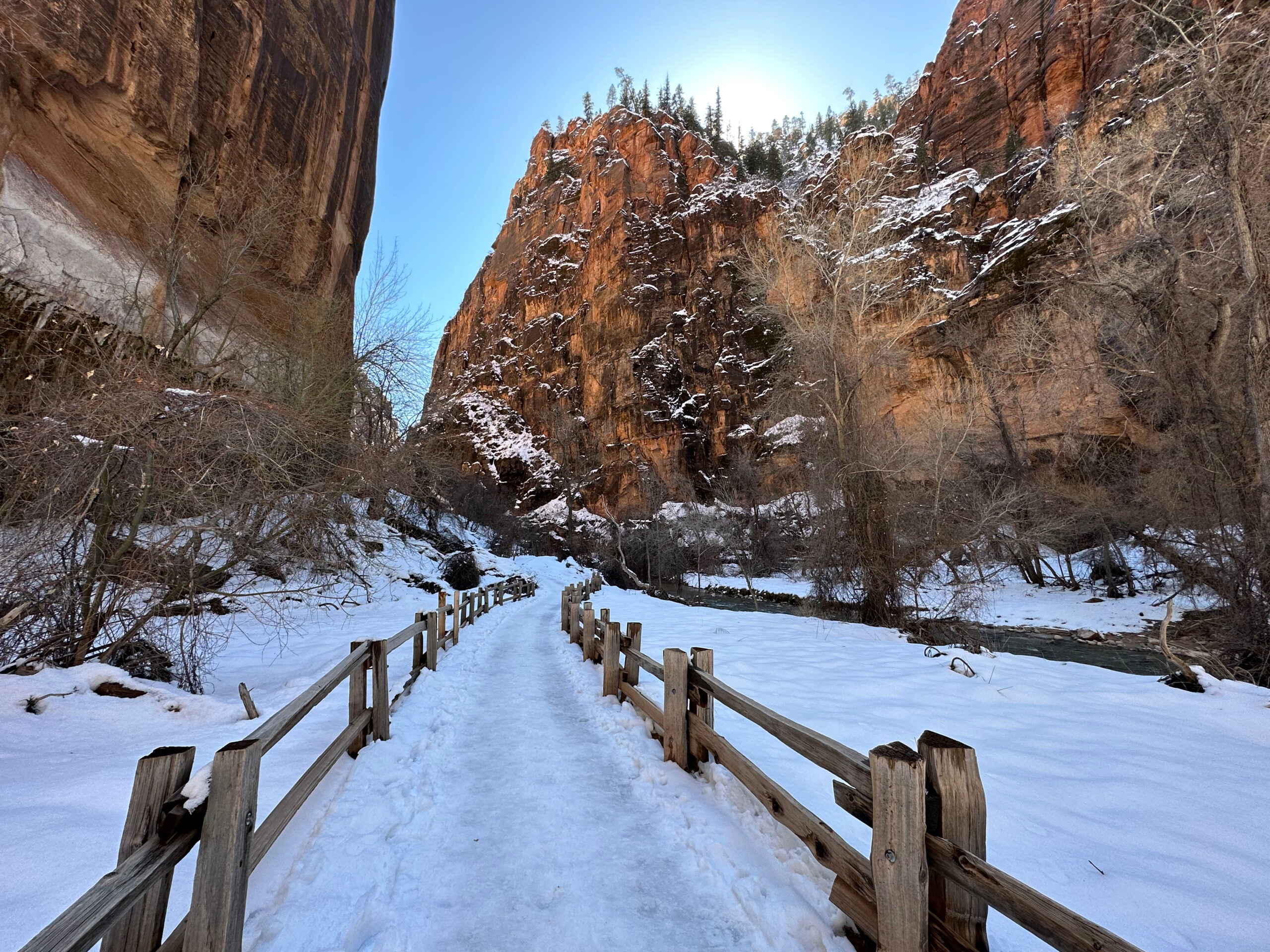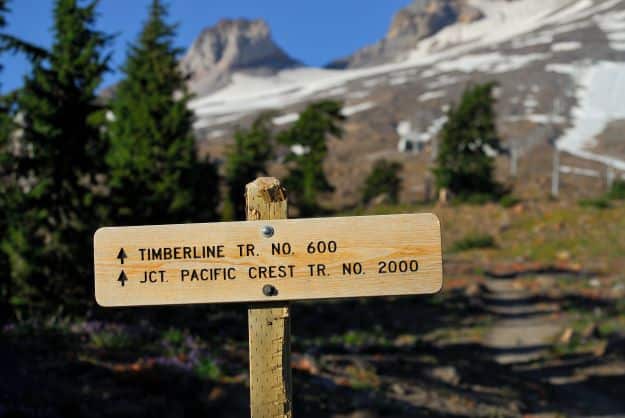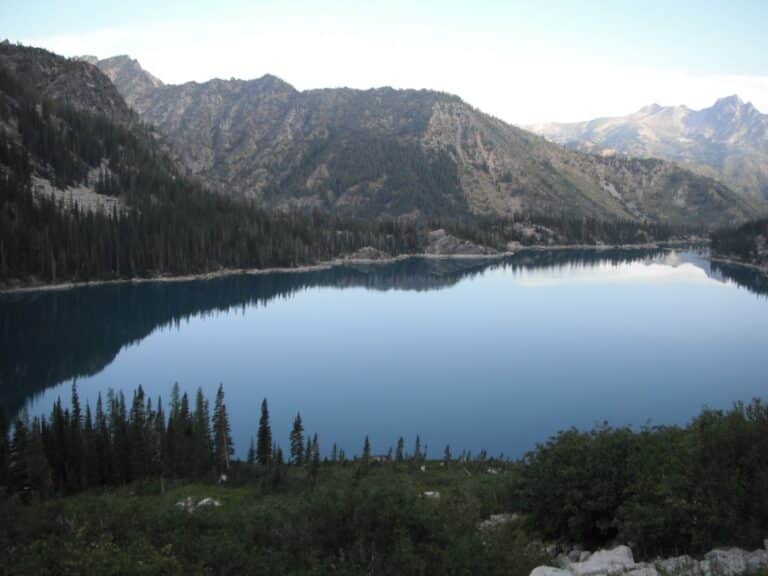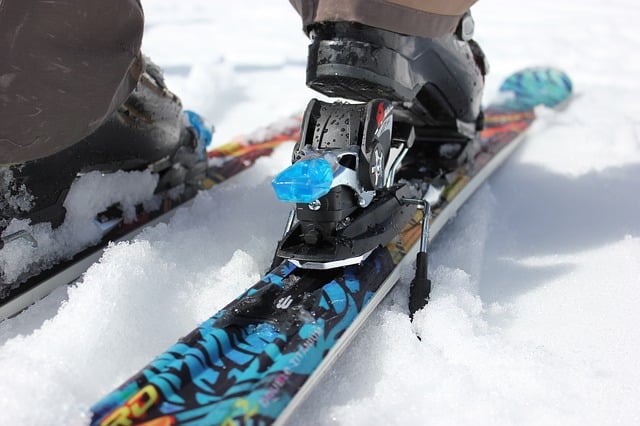A Beginner’s Guide To Backpacking: Explore With Confidence
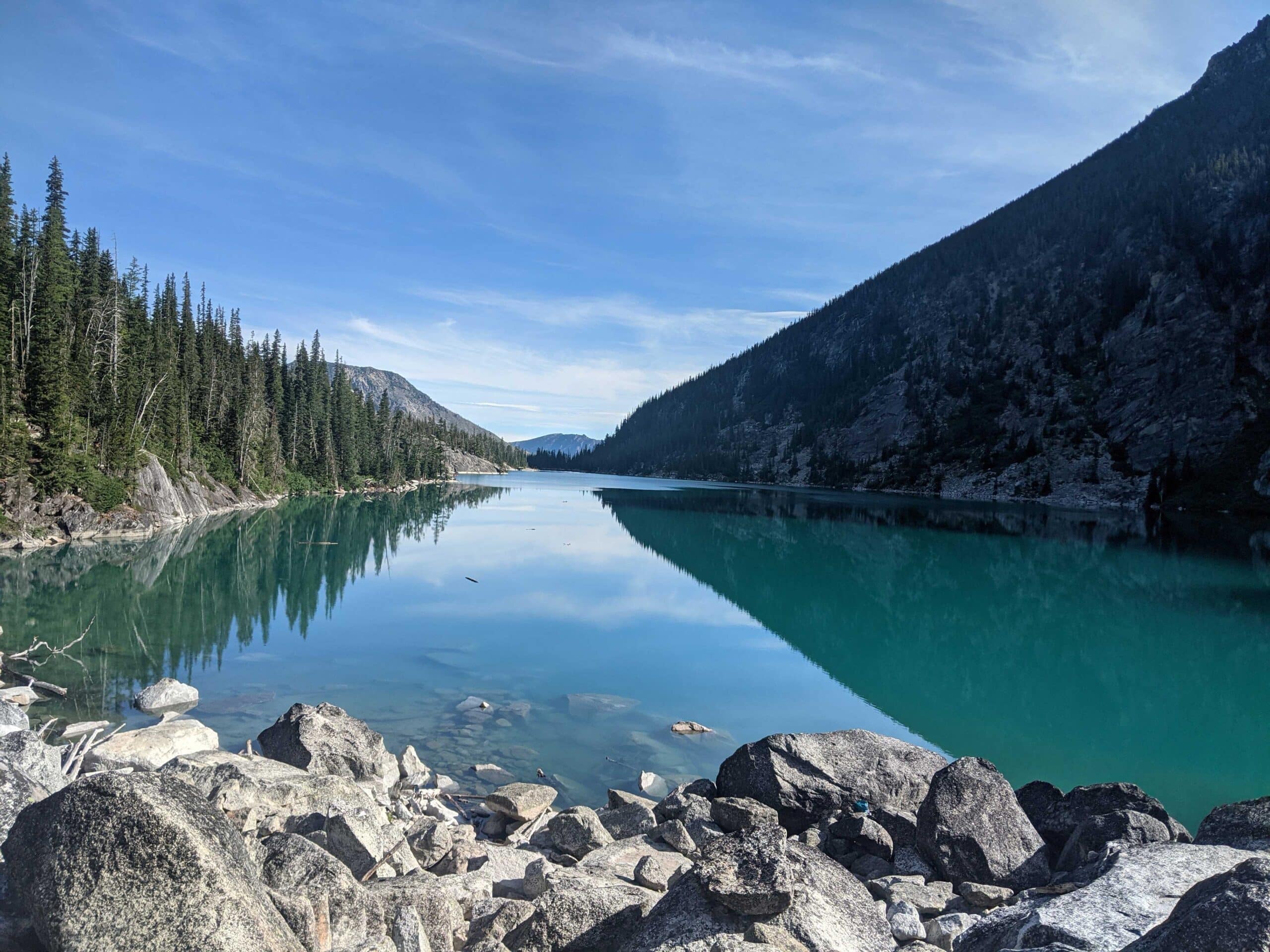
Our content may include affiliate links, through which we earn a small commission on purchases. Want to learn more about us? Read here.
Why Backpacking?
Backpacking is the ultimate way to immerse yourself and seek refuge in nature. It can be an overnight or multi-day trip where you hike and camp in the backcountry. All your gear, food, and water are carried on your back, and the conveniences of modern life are left at the trailhead.
This type of adventure is a way to unplug with an outdoor experience that gives you access to visit locations too far to get to on a day hike and access locations most people will never see.
Training and Shakedown Hikes
Backpacking requires a certain level of physical fitness and stamina, but there are trails for all fitness levels. Backpackers are on their feet hiking all day, covering many miles, typically with elevation changes. All this is done with a pack weighing over 50 pounds or more.
Training for your first trip should include day hikes of various lengths with elevation changes. Taking a shakedown hike before your trip with weighted bags or a fully loaded pack will help you get used to carrying weight.
Planning Your First Backpacking Trip
Take your time in deciding where to go for your first backpacking trip. Plan to take your first trip during the summer months or in warm weather. Find a destination with a feature you want to see, such as waterfalls, mountain landscapes, or a lake.
Depending on your physical condition, plan to backpack a distance shorter than you would on a typical day hike and limit elevation gain to a few hundred feet. An ideal distance for a beginner is between 5-7 miles at most per day, and 1-2 nights is a good length.
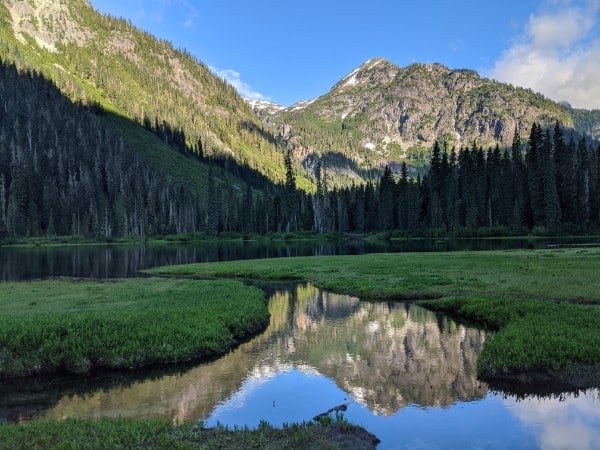
Find out if a hiking permit or bear canisters are required in the area. Before you go, check with the local ranger station for trail report information and restrictions. The AllTrails app is a great resource for finding beginner hikes near you.
What Gear Should You Pack?
Upfront preparation will go far into making an enjoyable first backpacking trip. No trip should be taken into the backcountry without the 10 Essentials. As you build your gear arsenal for backpacking, consider borrowing or renting gear to see what works for you, and when you are ready to buy, check out our latest camping gear list for 2023.
Some outdoor stores also offer used gear at discounted prices. Tip: do not cheap out on a chair; an uncomfy chair can break your spirit. Check out the 5 BEST Camp chairs.
Backpack
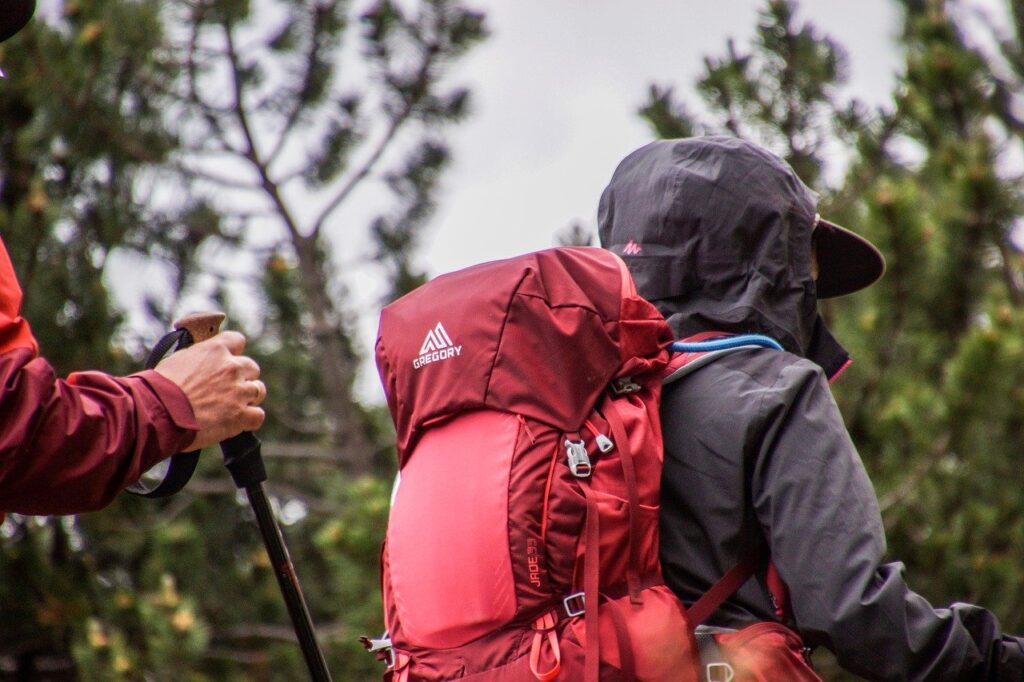
For your first backpacking trip, you may borrow or rent a backpack, as this can be one of the pricier gear investments. A good backpack should fit your torso with a hip belt and adjustable shoulder straps. It should be comfortable when loaded with weight and allow you to carry it on your hips rather than your back.
Options to consider: lightweight with an internal frame, multiple storage compartments, an internal compartment for a hydration bladder, mesh outer pockets, removable lid, external attachment straps for a sleeping pad, and trekking poles.
Tent Gear
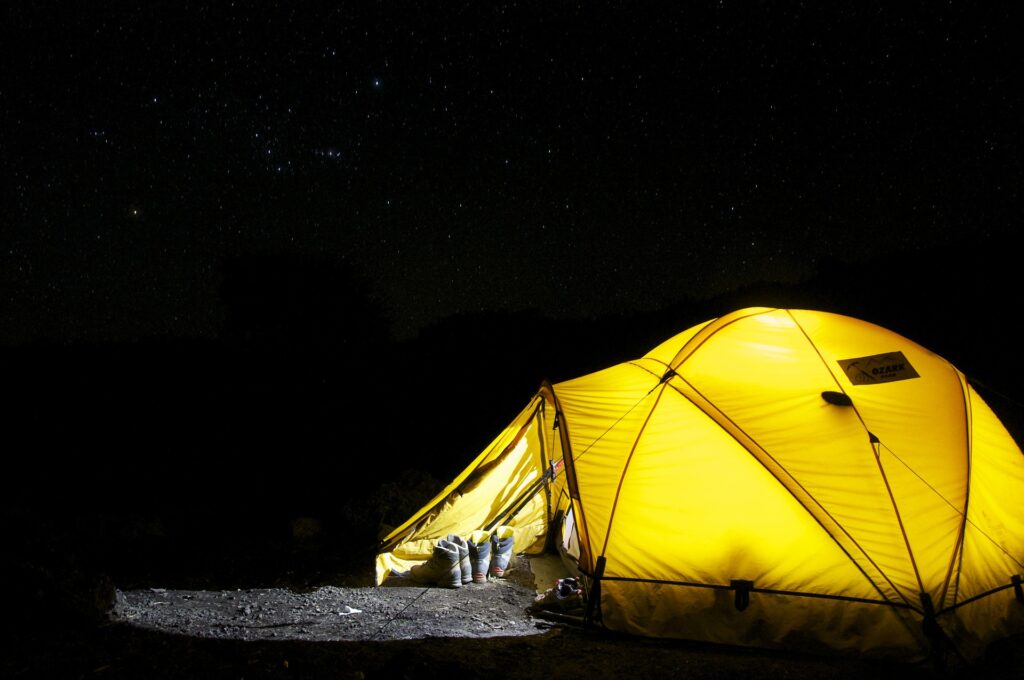
A tent for backpacking will be lightweight, packable, waterproof, and easy to set up. Tent gear includes the tent, poles, stakes, rain fly, and footprint. Tents are sized by the number of people they’ll sleep.
Packing a 3-person tent will add a lot of unnecessary weight if you plan to sleep solo in the tent. Borrowing a tent for your first trip is another great option, and always set up the tent before you use it on the trail to ensure you have all the parts.
Sleeping Bag and Pad
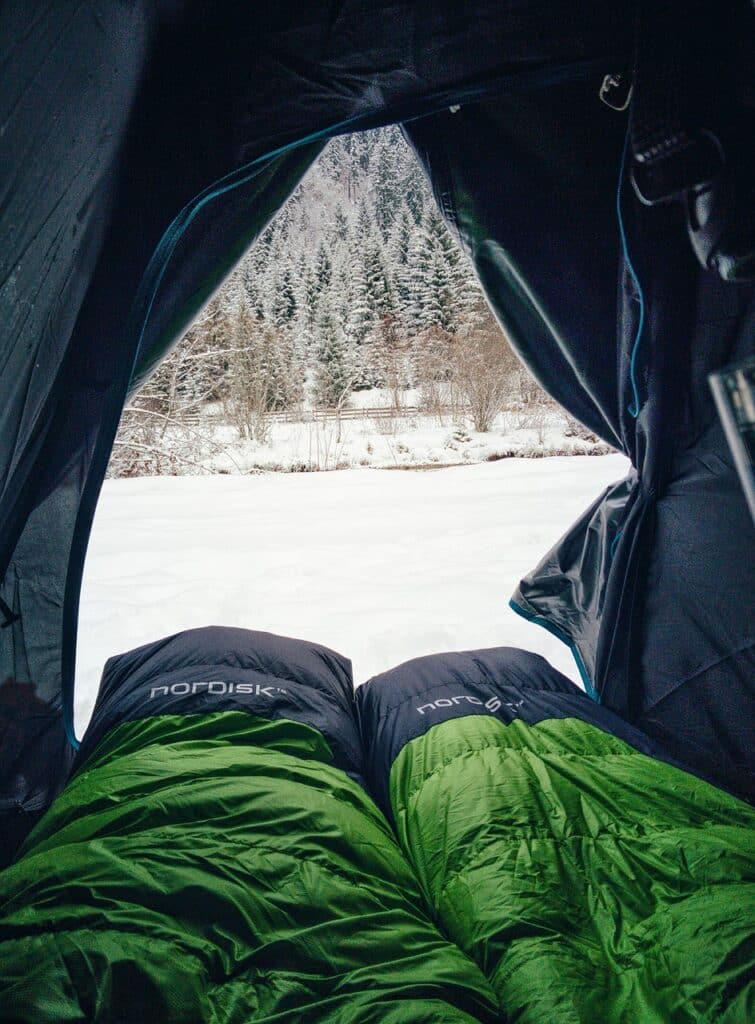
Nothing beats a challenging day on the trail like a good night’s rest. Choose a sleeping bag rated for the average low temperature in the locations you plan to backpack. Sleeping pads both add comfort and insulate you from the cold ground.
There are options for sleeping pads, from foam to air-filled, each with benefits. Backpacking lightweight and packable pillows is a luxury – be warned, it’s hard to return once you take one.
Cookstove
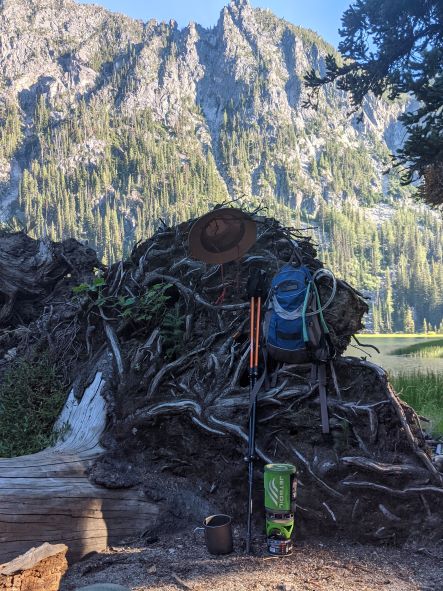
Nothing beats a warm meal after a long day on the trail or a hot cup of coffee while enjoying a mountain sunrise. Planning what you will eat, drink, and need to cook in the backcountry will determine the type of stove needed.
Backpacking stoves have various capabilities and fuel types, so research what is best for your needs. Understand the limitations when deciding on a stove. Some stoves don’t work well in high elevations; others are used only for heating water. Practice using your stove before you go and pack extra fuel.
Kitchen Set-Up
The type of items needed in your camp kitchen will vary greatly on the meals you plan to eat. Some backpackers eat freeze-dried meals directly from the bag, requiring added water and a utensil.
While others may cook family-style meals that require pots, plates, utensils, spices, etc., most camp kitchens will include a lightweight, unbreakable cup, vessel for heating water, utensils, small towel, and biodegradable dish soap. Limit what you bring to the items needed for your planned meals.
Water Treatment System
Don’t drink untreated water – no matter how clean it looks. It’s best to find clean and flowing water to treat. There are many options for water treatment, including pump filters, gravity filters (our favorite for base camp), treatment tablets, UV light purifiers, or even boiling water.
Research the best water filtering bottles, pick a method or two to try out before your backpacking trip, and practice using it.
Food Supply
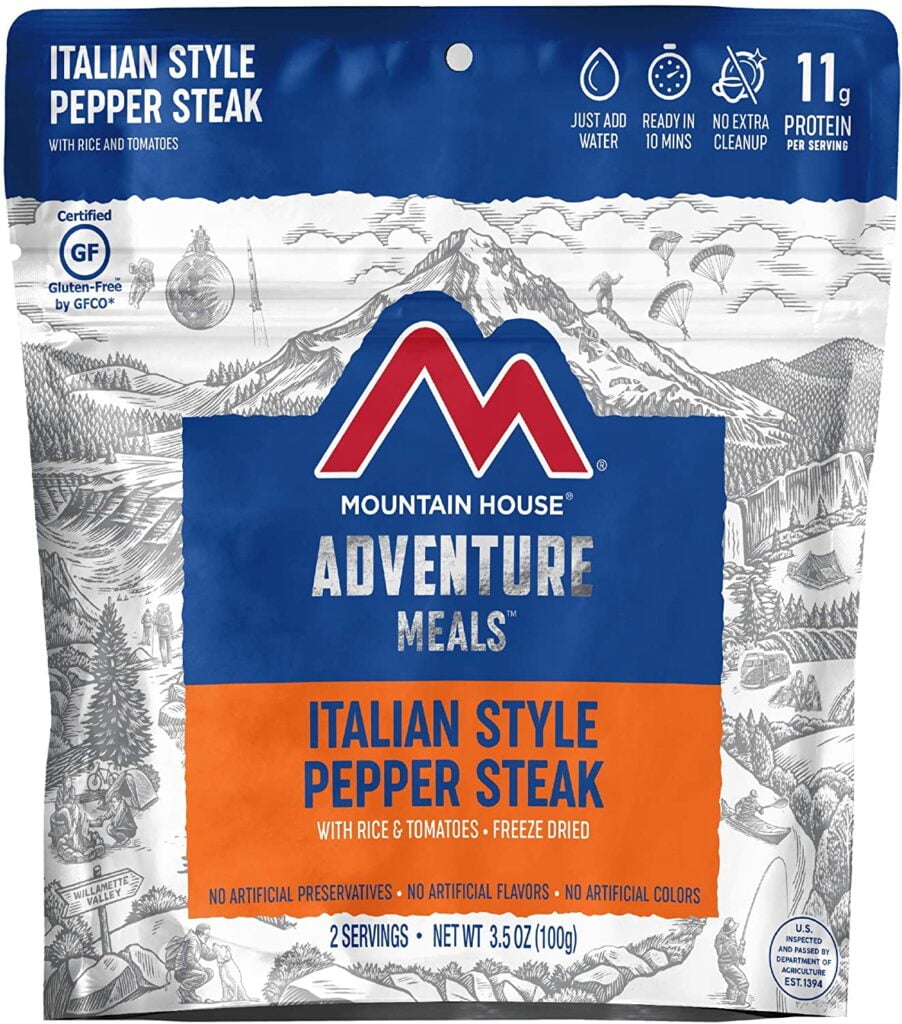
You will carry food for all your meals, extra snacks, and beverages in your dry sack or bear canister. At camp, it should be hung 12 feet above the ground and at least 200ft away from your sleeping area using a paracord.
Carry more food than you think you will need, and plan to take at least one extra meal should you end up on the trail longer than anticipated. Try out different options for backpacking meals, especially freeze-dried ones, before seeing how they sit with your stomach.
Bathroom Kit
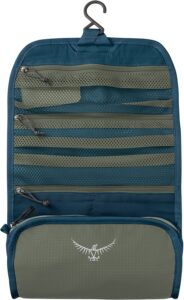
This kit should be packed in its bag and packed somewhere convenient in your pack. It will include a trowel, toilet paper or wipes, hand sanitizer, and a plastic bag(s) for packing used paper or hygiene products. Dog waste bags are great for packing out used paper or hygiene products.
Remember that some backpacking locations require you to pack out human solid waste.
Clothing: What to Wear and Pack?
Hiking Clothes should be worn when you hit the trail and while hiking daily for multiday trips. Pick clothing you’ve worn before for hiking that is comfortable under your pack. Consider clothing made of tech fabrics or merino wool, which wick perspiration and are good for keeping you cool and dry.
It is a personal preference if you take multiple sets of hiking clothes or wash and wear them again.
Camp Clothes are what you will change once you get to camp, and what you wear will vary based on the weather conditions. Once you are done hiking for the day, it’s good to clean up and change into warm and/or dry clothes so you don’t get chilled as your core temperature cools.
Once changed, air out or wash your hiking clothes for the next day on the trail. If at all possible, avoid washing clothes in the backcountry. If needed, use biodegradable soap.
Clothes Packed in Your Bag:
- Base layer– Just like it sounds, the base layer is closest to your skin and what you will want on should the weather turn cold or at night when the sun goes down. It is also an essential layer for breathable and moisture-wicking material. Avoid cotton fabrics for the base layer, as they will absorb moisture and not move it away from your body. Tech fabrics or Merino wool are best.
- Insulation Layer– This layer is necessary even in the hot summer, and you should always plan for the worst. The weather can change quickly in the mountains, and temperatures will drop at high elevations at night. A packable down jacket or fleece is an excellent option to keep you warm and will not add too much weight to your bag.
- Raingear- Nothing ruins a trip faster than being wet, cold, and unprepared. Weather can be unpredictable and even dangerous if we are not prepared. Plan to carry rain gear, a jacket with a hood, and pants on all backpacking trips. Ideally, you won’t ever need it, but you’ll be glad you have it when nature surprises you.
- Trail hat, Beanie, Buff, or Bandana- Headwear options are essential for protection from the sun, wind, cold, and rain. Do not forget your LED headlamp.
- Gloves- Useful on the trail if you are using trekking poles to prevent blisters or when scrambling across boulder fields and at camp on cool evenings.
- Socks, Liners, and Gaiters- Nothing new should be used on your backpacking trip. Use socks and liners (if you prefer) that you have tested on day hikes and thoroughly vetted to your liking. Hiking gaiters are an excellent option for hiking on a trail with small rocks or scree. They will keep your boots clear of debris.
- Sunglasses- They provide UV eye protection and protect eyes from debris if it’s windy.
- Camp Shoes/Water Shoes- It’s essential to carry a second pair of shoes that can be worn at camp to give your feet a break after a long day on the trail. Choose a multipurpose shoe that can be worn in the water, dries quickly, and is lightweight.
- Hiking Boots or Trail Shoes- Every hiker has their preference. Make sure whatever you pick is well broken in and appropriate for your hiking trail. If you’re looking for new shoes, check out our list of the best hiking shoes for 2023.
Packing Your Backpack
As a beginner, you will want to limit extra weight in your pack. A well-packed bag should have just the gear you need and nothing more. Over the first few trips, you will quickly discover what items you brought that were not used and where you were lacking.
Aim to have a fully loaded backpack weight under 50 lbs for your first trip before adding water, and the lower the weight, the better.
How to Pack
Before packing, gather your gear into one location and take inventory using a checklist to ensure everything is there before packing. Pack your filled water reservoir first to sit smoothly across the back in the hydration compartment. It should sit in the middle zone.
Pack the bottom zone next and work your way up, making sure not to do anything to dislodge the hose to your reservoir (a mistake you will only make once). Be mindful to pack with the weight evenly distributed from left to right.
Bottom Zone: If yours has one, this zone or compartment should be used for items you won’t need to get to until you get to camp and bulky items. This includes a sleeping bag, sleeping pad (if you are packing internally), camp clothes, etc.
Middle Zone: This is where most of your weight will be packed to keep your center of gravity low. A packed dry sack or bear canister filled with your meals will go in this zone, along with items you won’t need access to on the trail. This will include a camp stove, fuel, kitchen set-up, and tent gear.
Top Zone: Anything you may need access to during your hike, along with lightweight items, goes in this zone. These items include trail snacks, a pack cover, rain gear, an insulated jacket, a beanie, and a bathroom kit.
Exterior Pockets
Use these pockets for items you would like to have quick access to. Items include bug repellent, sunscreen, sunglasses, a map, a GPS, a camera, a water bottle, car keys, identification, etc.
Choosing a Campsite
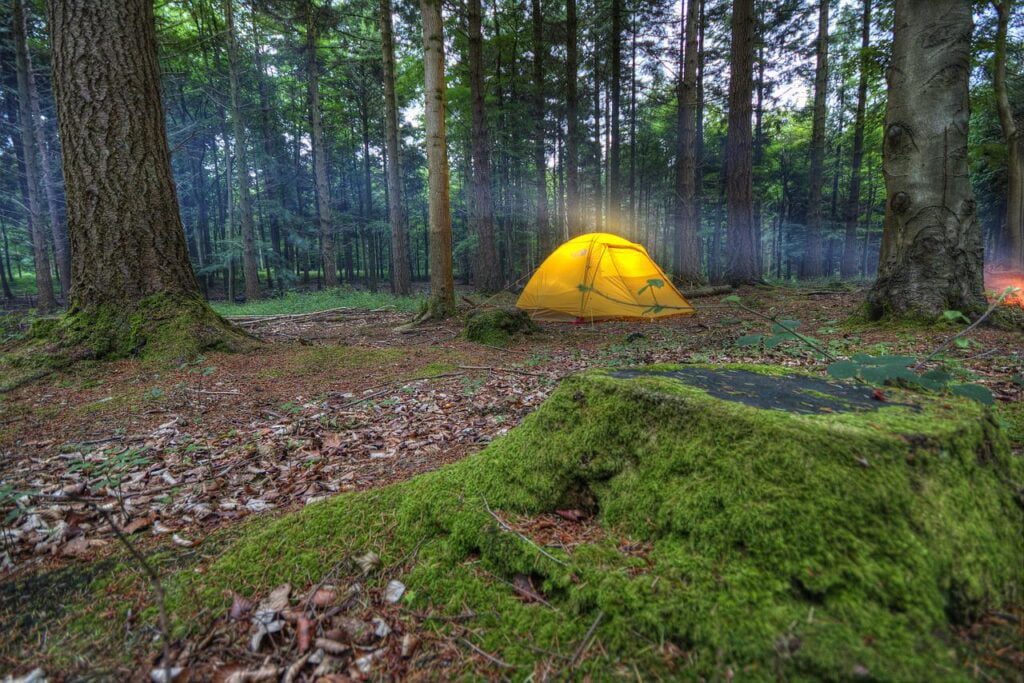
Camping at an existing site is best and typically required. If that’s not an option, choose a site at least 200 ft from any water source and off the trail. Try to find an area that has already lost vegetation cover or a site that naturally lacks vegetation. Look for open and level spaces for setting up a tent.
Try to pick a spot with good drainage should a rainstorm come through. Avoid areas with dead trees that are still standing (widow makers) that could come down on someone.
Setting up Camp
Try to set up your campsite in the shape of a triangle. The sleeping, cooking, and food storage areas at each triangle point are separated by about 200ft or 70 steps.
No food or products that may attract animals should be in the sleeping area, including toothpaste and wrappers. Anything attracting animals should be hung in a bear bag or canister in the food storage area at least 12ft above ground.
When Nature Calls
Find a spot a least 200ft away from any water source. Dilute urine with water from a bottle to limit the salts in the urine, which attracts some animals. Proper disposal of solid waste in the backcountry is to bury it 6-8 inches deep in a cat hole unless packing out waste is required.
Toilet paper should either be buried or packed out. Hygiene products, including used tampons and pads, should be stored in plastic bags, kept away from camp, ideally hung in a bear bag not to attract wildlife, and packed out.
Practice The Principles of Leave No Trace
Leave No Trace is an ethical practice with a central idea that teaches us to enjoy nature while minimizing our impact. This includes our impact on wildlife through overuse, erosion, and trash.
We wouldn’t have life without nature, and we can make a difference in protecting this asset with our daily actions.
Emergency Preparedness
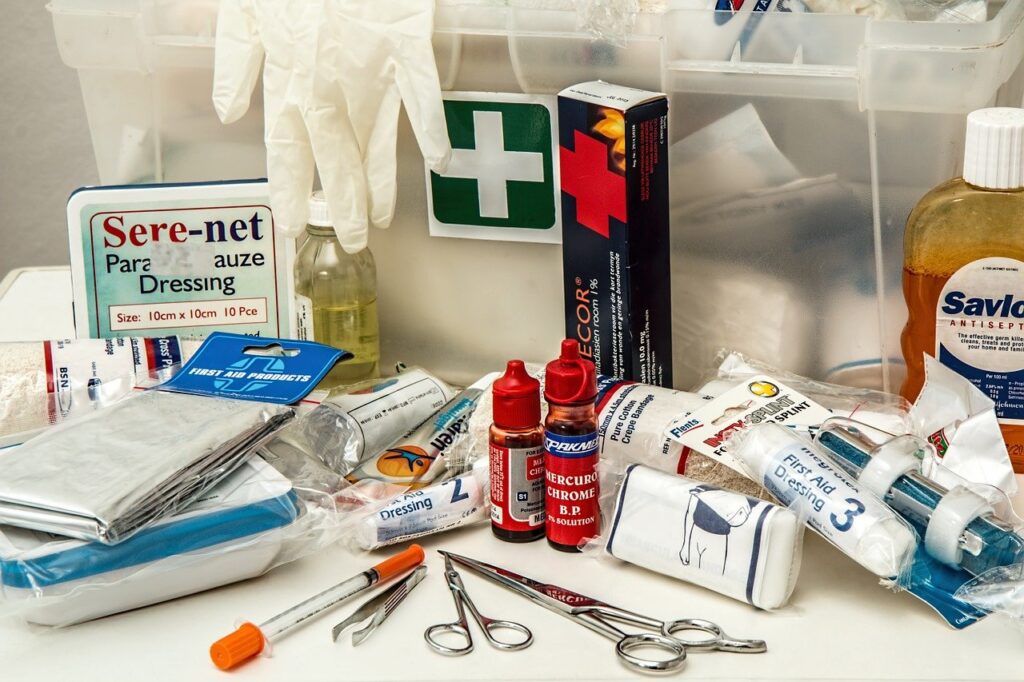
Aim to backpack with a buddy; there is safety in numbers, and sharing the experience is more fun. Always carry the 10 Essentials while in the backcountry and leave a copy of your itinerary with someone.
Check the weather before heading out. Consider carrying a Personal Locator Beacon (PLB) – an emergency SOS device that can transmit location for search and rescue. Continue to grow your knowledge and take courses in wilderness survival.
Frequently Asked Questions
Q: What Essential Gear Do I Need for Backpacking?
A: For a successful backpacking trip, it’s essential to have the right gear. Key items include a sturdy and comfortable backpack, a sleeping bag suited for the climate, and a lightweight tent. Clothing should be weather-appropriate, emphasizing layers for varying conditions, including a waterproof layer. Navigation tools such as a map and compass, or a GPS device, are crucial for route finding.
Don’t forget food and water supplies, with additional purification methods for water, and a basic first aid kit for emergencies. Also, pack a multi-tool, a headlamp or flashlight, and sun protection, including sunscreen and a hat.
Q: How Do I Plan a Backpacking Route and Choose a Campsite?
A: Planning your route requires researching trails that match your fitness level and interests. Beginners should opt for shorter and less challenging trails. It’s important to consider the availability of water sources along the route and to be aware of the weather forecast for the area.
Some trails might require permits, so check this in advance. When choosing a campsite, prioritize established sites that are at a safe distance from water sources to protect both the environment and your safety. The campsite should also offer some protection from the elements, like strong winds.
Q: How Can I Stay Safe While Backpacking?
A: Staying safe while backpacking involves several precautions. Educate yourself about the local wildlife and the proper way to store food to avoid attracting animals. Always treat water from natural sources to avoid contaminants. Bring a well-stocked first aid kit and familiarize yourself with basic first aid procedures.
In case of an emergency, have a plan for how to contact help, which may include carrying a satellite phone or a personal locator beacon in remote areas. Stick to marked trails and be aware of your surroundings to prevent getting lost or encountering unexpected hazards.
By addressing these key areas, beginner backpackers can embark on their adventures with greater confidence and safety.
Conclusion
A lot goes into backpacking, and the smallest mishap can have disastrous consequences. Always be aware of your surroundings, know your limits, and if you are not an experienced/expert backpacker, do not go alone. Backpacking can be one of the best experiences you’ll have. So be prepared and make memories.

